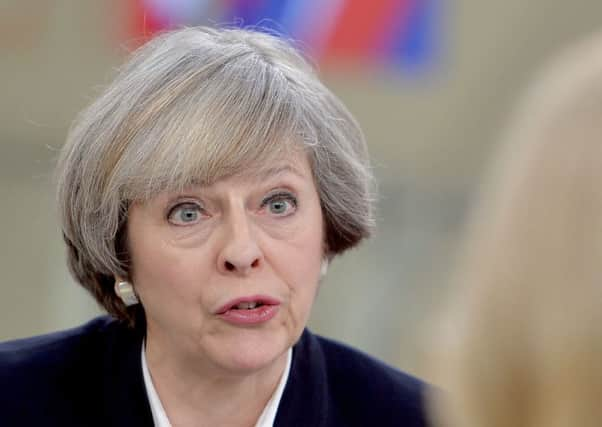YP Comment: Britain's Brexit opportunities - Businesses need not fear tariffs


There has been mounting pressure on both her and her Government in recent weeks to reveal more of its Brexit plan, with the clock ticking towards the March deadline when Mrs May said she would trigger Article 50.
This criticism has come from both sides – on the one hand from Brexiteers frustrated by the lack of progress in getting the ball rolling, and on the other from Remainers who argue that the absence of a detailed and cogent plan beyond the tedious “Brexit means Brexit” mantra is a symptom of wider divisions within Whitehall. The latter were given further ammunition with the resignation of Sir Ivan Rogers who abruptly quit as the UK’s ambassador to the EU, criticising “muddled thinking” among Ministers.
Advertisement
Hide AdAdvertisement
Hide AdAfter a difficult week the Prime Minister needed to come out on the offensive and yesterday she did just that. Speaking to Sky News the Prime Minister reiterated the importance of getting the best deal for the UK, adding that she would set out more detail on her aims “in the coming weeks”.
Mrs May will have been encouraged by a report published today by the think tank, Civitas, which says the cost of failing to strike a post-Brexit trade deal with the European Union could be covered by tariffs on imports from its remaining 27 members, meaning that British business need have little to fear from EU tarrif barriers.
It is a timely piece of good news for the Prime Minister and vindicates her decision not to rush into what are complex negotiations, the repercussions of which will have a lasting impact on this country. There is much at stake and the challenge now for the Government is to come up with a coherent strategy that is acceptable to our European neighbours and, more importantly, good for British business.
Tree felling saga - Sheffield campaigners fight on
IT is a sign of just how determined the campaigners from Sheffield Trees Action Group (STAG) are that they plan to ask the Government to intervene in their bid to save thousands of Sheffield’s trees from the chop. They do so with the backing of the former deputy prime minister, and local MP, Nick Clegg.
Advertisement
Hide AdAdvertisement
Hide AdThis is a long-running dispute that‑ has become so heated it has even grabbed the attention of the national media. On the one side is Sheffield City Council which is proposing to fell 20,000 trees as part of a city-wide tree replacement programme and on the other is a growing band of vociferous campaigners.
The council says the trees being removed are either diseased, dead or dying or causing damage or obstruction to pavements and are replacing them with new ones. But campaigners claim many of these removals are unnecessary and argue that the best way to help tackle pollution is to keep the existing trees.
There is no doubting their commitment to the cause. The action group now has more than 5,300 members, which has nearly doubled since November, and at the weekend hundreds of people formed a human chain around Sheffield Town Hall in a peaceful protest against the chopping down of the city’s trees.
If the council thought its tree felling programme was going to be straightforward then it failed to take into account the passion that can be generated when people feel the wellbeing of their local environment is under threat. As one local resident said: “We are thinking about our children. It’s about the landscape they are going to grow up in and their children are going to grow up in.”
Hull’s looking up
Advertisement
Hide AdAdvertisement
Hide AdThe New Year’s Day fireworks that greeted the start of Hull’s 12-month tenure as UK City of Culture was an impressive sight. So, too, was the Made in Hull light and sound show, the public art display that launched the city’s new cultural dawn.
But if that grabbed people’s attention then so, too, did the arrival yesterday of a 250ft-long sculpture that now stands proudly in the heart of the city centre. It is the brainchild of multimedia artist Nayan Kulkarni who has taken the giant blade that would normally sit at the top of a wind turbine and turned it into an artwork.
Hull has a rich industrial and cultural heritage and this momentous sculpture brings these two vibrant strands together. But all this would mean nothing if it did not bring people into Hull – which it has.
Its first week as City of Culture has generated more than 340,000 visits – a third of the one million expected throughout the year. These are exciting times for Hull and this is just the start.